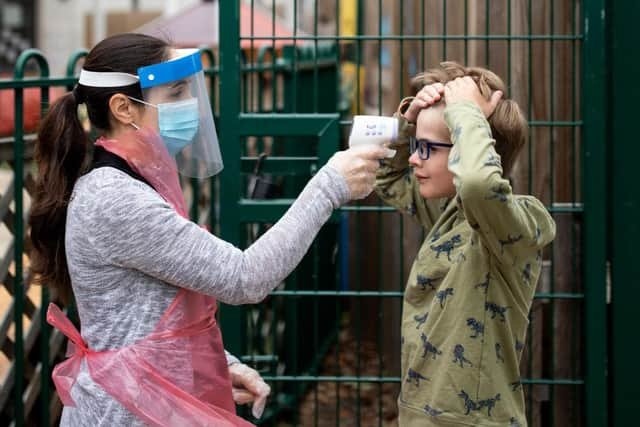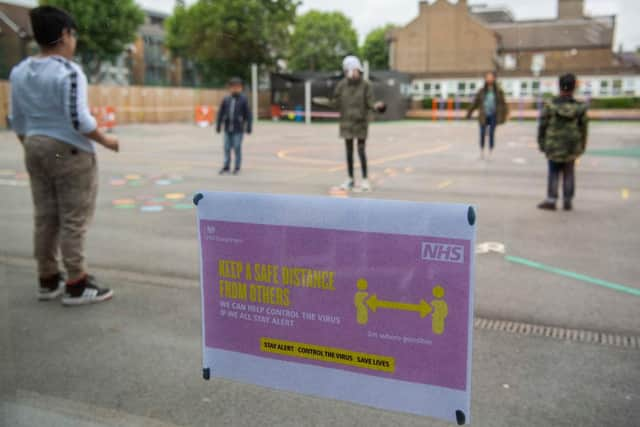UK schools: number of primary school pupils missing class due to self-isolation increases by more than 50,000
and live on Freeview channel 276
New Government data suggests that the proportion of pupils attending schools in England last week dropped as more children were forced to self-isolate at home.
The data suggests that on Thursday 25 March, 51,000 more pupils were out of class and self-isolating due to potential contact with a case of Covid-19 than the previous week.
Advertisement
Hide AdAdvertisement
Hide Ad169,000 pupils were self-isolating on 18 March when all schools in England had fully returned, the Department for Education (DfE) analysis shows, while 220,000 pupils were out of class on 25 March.


The DfE said the main reason for absence among pupils who did not attend school for Covid-19-related reasons was self-isolation due to contact with a possible case inside the school.
How many children were off school?
The DfE estimates that approximately 3.3 per cent of all pupils – up to 264,000 children – did not attend school for Covid-19-related reasons on 25 March, up from 2.5 per cent on 18 March.
This number is made up of an estimated 173,000 pupils who were self-isolating due to a potential contact with a Covid-19 case inside the school, and a further 47,000 pupils were self-isolating due to a possible contact outside of school.


Advertisement
Hide AdAdvertisement
Hide Ad28,000 pupils were absent because they suspected they had Covid-19 on 25 March, and 9,000 were off after testing positive for Covid-19 themselves, up from 7,000 the previous week.
A further 7,000 pupils were absent as their school was closed due to Covid-19-related reasons, an increase of more than 3,000 from the previous week.
Secondary schools in England were given flexibility to stagger the return of their pupils between 8 and 12 March to allow for the mass testing of students; all students were expected to complete three rapid Covid-19 tests, spaced three to five days apart, then further tests at home twice a week.
Around 87 per cent of secondary pupils were in school on 25 March, a fall on 18 March when 89 per cent attended.
Only a ‘small increase in numbers’
Advertisement
Hide AdAdvertisement
Hide AdGeoff Barton, general secretary of the Association of School and College Leaders (ASCL), said: “Although there was a slight dip in attendance last week, this was always likely to happen as Covid positive cases emerged and triggered Covid protocols necessitating the self-isolation of close contacts.
“On the whole, however, attendance levels have borne up remarkably well, and great credit is due to schools and their staff for all they have done. There is now the natural firebreak of the Easter holidays and we will see where we are at the beginning of next term."
Guidance for schools was recently updated following the Government’s announcement that anyone who receives a positive result using a lateral flow test will be asked to take a confirmatory lab-based polymerase chain reaction (PCR) test.
All positive results from rapid asymptomatic tests taken by pupils and teachers, either at home or at school, now need to be confirmed with a PCR test within two days.
Advertisement
Hide AdAdvertisement
Hide AdIf the PCR test is negative, students and staff will now be able to return to class and stop self-isolating, the advice says.
A DfE spokesperson said: “With the testing programme now in full swing and millions of tests being conducted each week, we are only seeing a small increase in the numbers of students testing positive and self-isolating.
“We are grateful to everyone who continues testing twice-weekly from home and self-isolating where that is necessary, playing their part in keeping everyone as safe as possible.”
Additional reporting by Press Association